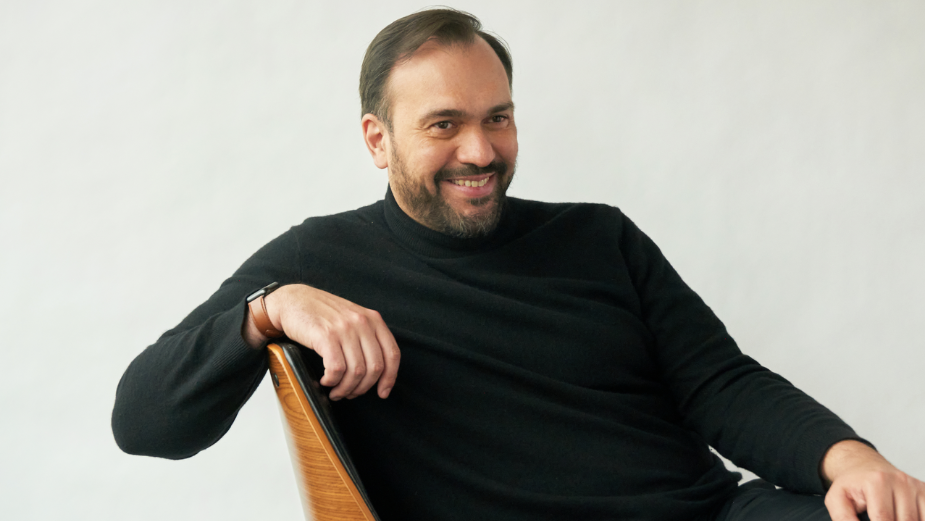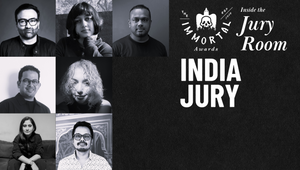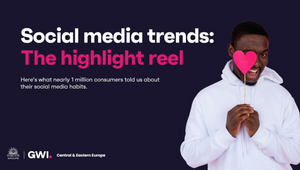
Sergio Lopez-Ferrero on Why 2024 Will Be the Year of Craftsmanship and Experiential Creative

Spare a thought for anyone trying to define what’s coming next. “Predictions are difficult”, in the words of Mark Twain, “especially when they involve the future”.
So, when LBB asked Sergio Lopez-Ferrero, Publicis Production’s global CEO and all-round industry authority, what to expect in 2024, we knew we were handing him an unenviable task. But, by delving into the trends that defined 2023, there’s a strong foundation from which to look ahead. That’s why the production guru is confident when he talks about the confluence of AI and unprecedentedly high consumer expectations setting a new standard for quality in the industry.
Over the course of our conversation, Sergio shared more insights into that vision of the near-future, and outlined how the industry can collectively rise to meet the challenge head-on…
LBB> Before we jump into 2024, let’s look back at that year that’s just passed. Was there anything in the industry that really surprised you, or upended your expectations, in 2023?
Sergio> Last year was the year of AI. Was anybody talking about anything else in 2023?!
It’s interesting because in 2022 we signed a partnership with OpenAI. At that time, we talked to a lot of our clients about it and the general consensus was that we were looking at a future which was somewhere between five and ten years away. As it turned out, the future arrived a lot faster than we expected.
We’re now talking about AI in all sorts of different contexts, from generative to how it interacts with data. And this is not something which is confined to our industry - AI has become a global consumer trend. ChatGPT, for example, has astonishingly grown its audience more quickly than TikTok or Instagram.
This means that now more than ever, anyone can be a creator. Over the course of my career, technology has transformed from an impediment to accessing top-tier creative tools into something which can help any person bring their wildest dreams to life.
By a clear margin, that was the biggest trend of the past year. But something which came as a pleasant surprise was that 2023 was also a fantastic year for craftsmanship and creativity. Not just in advertising – the Golden Globes saw a lot of healthy competition between films that came to life thanks to immense creative passion and craft. So, as well as disruption from technology in the form of AI, we also saw a renewed interest in the practicality and artistry of great film craft last year.
LBB> Is it a bit ironic that those two trends are happening at the same time? Do you think a greater appreciation for craft is partly driven by a reaction to the instantaneous nature of generative AI, for example?
Sergio> In the world of production and creativity, we like building things. It’s deep in our DNA. So maybe there’s an instinctive reaction whenever a new technology is shaping up to change the way we do that. But that dynamic is changing because, to be frank, three years ago we all had to embrace technology to keep alive an industry that has often resisted tech.
Ever since we collectively began shooting remotely in the wake of the pandemic, I feel we’ve become less scared of technology. We’ve seen how it can take our work to the next level. That’s not just applicable to AI, but also virtual studios where you’re not limited by the number of hours in the day, or the practical pressures of building ambitious sets. So, I don’t think we are scared of AI, or are reacting to it in a negative way. On the contrary, we’re excited to apply it to our work and raise our game.
I think it’s time to talk about what the next level of creativity looks like. It’s been interesting to see the rise of experiential in 2023, whether it be Yayoi Kusama's Infinity Mirror Rooms selling out or the new Mercer Labs opening in New York, there’s a feeling that experiences you can touch and be immersed in are climbing up the creative agenda. Combine that with the impending launch of Apple’s Vision Pro headset which enables precisely these kinds of experiences on an individual level, and you start to see the shape of creativity’s direction in the near future.
LBB> So is 2024 set to be the year of experiential?
Sergio> I think it’s a trend which will continue to build momentum this year, yes. People want to get out of their houses after three or four years of trying to figure out what exactly is ‘next’.
Experiential is the through-line between so many of the trends we’ve seen in recent years. From building digital worlds through web3 technology to AI-enabled instant creativity, down to the increased sophistication of virtual environments thanks to the acceleration of virtual production. Consider how it connects, for example, to automotive advertising. Instead of going to a dealership to try a car, an authentic virtual test-drive is now becoming reality thanks to the confluence of all these technologies.
Production is an industry defined by moments that make us leap forward. And this is our next leap forward.
LBB> And what about the growing desire for high-quality craft that you mentioned earlier? Do you think that will continue this year?
Sergio> Yes. And the reason I’m confident of that is that it’s never been easier to create something that is good. And by ‘good’, I mean of an acceptable quality. As a result, there is going to be absolutely no tolerance for anything that is less than good.
So, competent craft is no longer an effective creative differentiator. Instead, people are searching for content which has a kind of magic, or a level of craftsmanship that is so high-quality you can appreciate it on a human level. To go back to the world of film, this is something that people loved about both Barbie and Oppenheimer. Whether it be the stories of a shortage of pink paint or the idea of Christopher Nolan attempting to recreate a nuclear blast without CGI, that painstaking passion for craft was contagious - audiences felt it, too, and it contributed to the success of the respective films.
For brands, there’s a similar connection between the idea of craft and trust. An example to illustrate this is the Tesla store in New York. People don’t go there to treat it as a traditional dealership - they go there to experience the brand and, ultimately, to see if the Cybertruck is real with their own eyes. They’ve seen the videos online, but can they really trust them? Only the real-world, practically-built storefront can effectively address that question of trust.
There’s a tension between how you keep people amazed as a brand, and you reassure them that the amazement is legitimate and justified. High-quality, practical craft is a great way to resolve that tension.
LBB> That’s tough in a media landscape where there’s a constant demand for more content, especially short form. How can production meet that challenge?
Sergio> Well, first of all I don’t think it’s as simple as a desire for purely short-form content. In many ways, I wish it was!
But, the single media trend that is clear is that advertisers want things that are measurable. They’re willing to give up the perception that ‘everyone is going to watch this TV ad’ in exchange for measurability. We’re seeing now, for the third year in a row, a decline in linear television in comparison to connected television. For many consumers, there’s no worthwhile difference between watching ITV by pressing the button marked ‘3’ on their remote control, versus opening up the ITV Player app that’s increasingly coming pre-installed on their new TV. As far as they’re concerned, it’s the same thing.
But from a client and agency perspective, it makes a massive difference. It’s the difference between relying on Neilson numbers to see how many people may or may not have tuned into something, versus having an entirely precise set of data on digital channels. So that explains the shift in spend from linear TV towards connected TV.
Combine that with the trends we’re seeing in production, and I think we’re going to see a greater acceleration in ‘relevant’ content enabled by AI and virtual studios. It will help advertisers know, for example, if you’ve recently bought a car that you don’t need to be bombarded with car ads for a year or two at least.
That, rather than any desire for specifically long or short-form content, is the media trend I see having the most impact in 2024 and beyond.
LBB> But that demand for more content is showing no signs of slowing down. Towards the end of last year, Publicis developed a new strategic production model to help clients deal with the demand for more and better content. Is there ever going to come a point where it becomes too much, and production reaches the limit of what’s possible?
Sergio> Ha, I don’t think so! Because production is everything. As soon as clients have a vision, without production, their ambition cannot materialise. The challenge for production has always been to deliver on the creator’s ambition, in combination with the media needs for different types of content.
The reason we launched that team is because we need to start thinking about production in a more sophisticated way. We want to create meaningful experiences and we can do this by taking an industry-specific approach whereby we integrate the content supply chain, from craft to commerce, delivering impact, engagement and conversion across consistent end-to-end consumer experiences.
We also have fantastic practitioners who excel at producing and elevating creativity. What we need on top of that is to help solve our clients’ business problems by thinking strategically and operationally. This way we are able to truly unlock the value of content for our clients through production.
In short, the world needs more production. And that’s exactly what we’re going to see in the next year.















